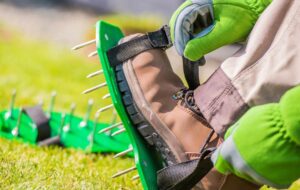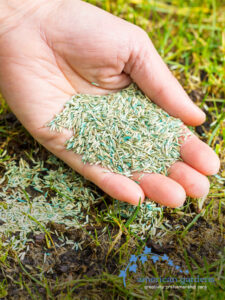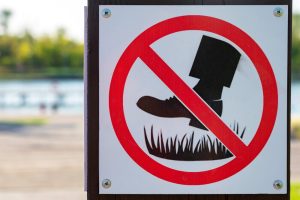Are you looking to keep your lawn looking fresh and green? Then you definitely need to try out lawn aeration! Basically, it’s a way of creating tiny holes in your lawn to help the grass roots get more air, water, and nutrients. Don’t worry, you can do it manually or use a fancy machine, depending on how big your lawn is and what you have available. Either way, your lawn will thank you for the extra love and care!
Four reasons we consider lawn aeration to be a basic part of our maintenance packages
Reduces soil compaction
Properties with high foot traffic compact soil and make root growth less prolific.
Increases water infiltration
Water finds the lowest level. So, if you create thousands of holes in your turf, rain water is going to seek out the lowest points and directly nourish valuable turf roots. Less water runoff means more water for your lawn’s root system.
Encourages turf root growth
With reduced soil compaction and some valuable nourishment, roots have a little room to stretch their legs. This expansion of the turf root system increases the foundation of the plant and improves its overall health.
Reduces thatch buildup
Plugs left on the lawn provide valuable microbes that help breakdown excessive thatch layer. After the aeration holes fill in, a reduced thatch layer will allow for water to continue to penetrate and air to circulate among the blades of grass.
How do I actually do the lawn aeration?
There are multiple ways to get your lawns aerated including
 Manual aeration
Manual aeration
This method involves using a manual aerator tool, also known as a garden fork or aerator shoes, to make holes in the soil by hand. You simply step on the tool to push it into the soil, and then move it around to create multiple holes throughout your lawn.
 Mechanical Aeration
Mechanical Aeration
This method involves using a machine called a core aerator, which removes small plugs of soil from the lawn to create holes. Core aerators come in various sizes, from small handheld versions to large ride-on machines for commercial use.
Liquid Aeration
This method involves applying a liquid aerator product to your lawn, which works by breaking down and loosening soil particles to allow for better air and water flow. This method is typically less effective than manual or mechanical aeration, but may be a good option for small lawns or areas where physical aeration is not possible.
When is the best time to do lawn aeration?
Lawn aeration is best completed during the grass’ growing season, spring and fall. The fall is widely considered to be the ideal time to aerate your lawn, partially due to a reduced number of airborne weed seeds and the need to reinvigorate your soil after a long summer of foot traffic. The warm days and cool evenings of fall are also best for any overseeding that may occur in conjunction with aeration. Whether you aerate in the spring or the fall, aeration is a simple, natural way to revive your turf and increase the potential for success in future growing seasons!
What do I do after aerating lawn?
After you’ve successfully aerated your lawn, you should do the following steps
 Seed your lawn
Seed your lawn
As soon as you’ve finished aerating, you’ll want to put on your grass seed. It’s better to overseed so you can ensure a healthy and full patch of grass.
Water your lawn
After you’ve aerated, the dirt or soil will become loose and can dry out quickly. It’s therefore important to water deeply so that it moistens the ground to about 6 inches deep.
Fertilize your lawn
Fertilizing is an important step in ensuring your grass has all the nutrients it needs to grow healthy and strong. As the aeration causes channels to get closer to grass roots, it means that the fertilizer has a more direct path to get to where it’s needed.
 Keep off the grass!
Keep off the grass!
After your lawn has been aerated, give it some breathing room. The holes in the soil will need time to settle, disrupting it can cause damage to the grass. We recommend staying off the grass for about 2 weeks.